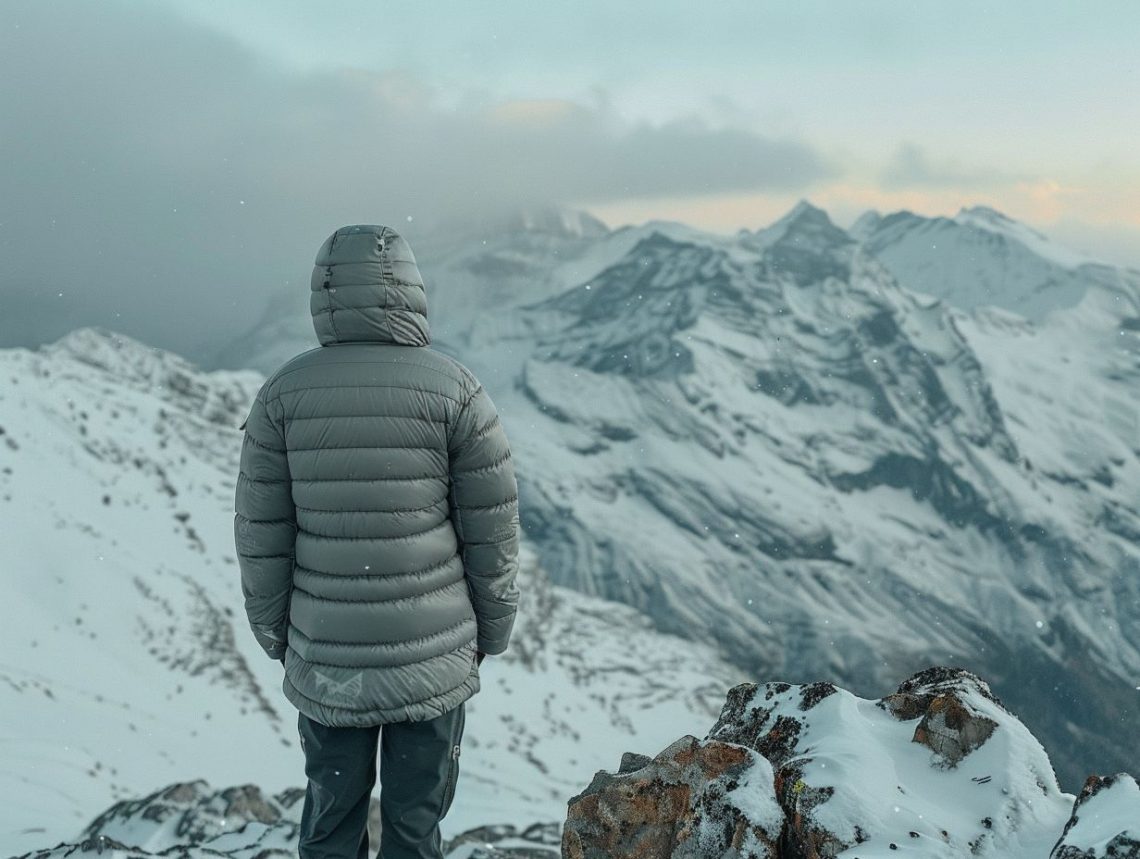
Down Jacket For Kilimanjaro
If you’re planning a trek up Kilimanjaro, one essential piece of gear you’ll need is a down jacket. But what exactly is a down jacket, and why is it the preferred choice for this adventure?
In this article, we’ll explore the benefits of using a down jacket for Kilimanjaro, what to look for when choosing one, how to care for it, and alternatives you can consider.
Whether you’re a seasoned hiker or a first-time climber, read on to ensure you’re well-equipped for your Kilimanjaro journey.
Key Takeaways:
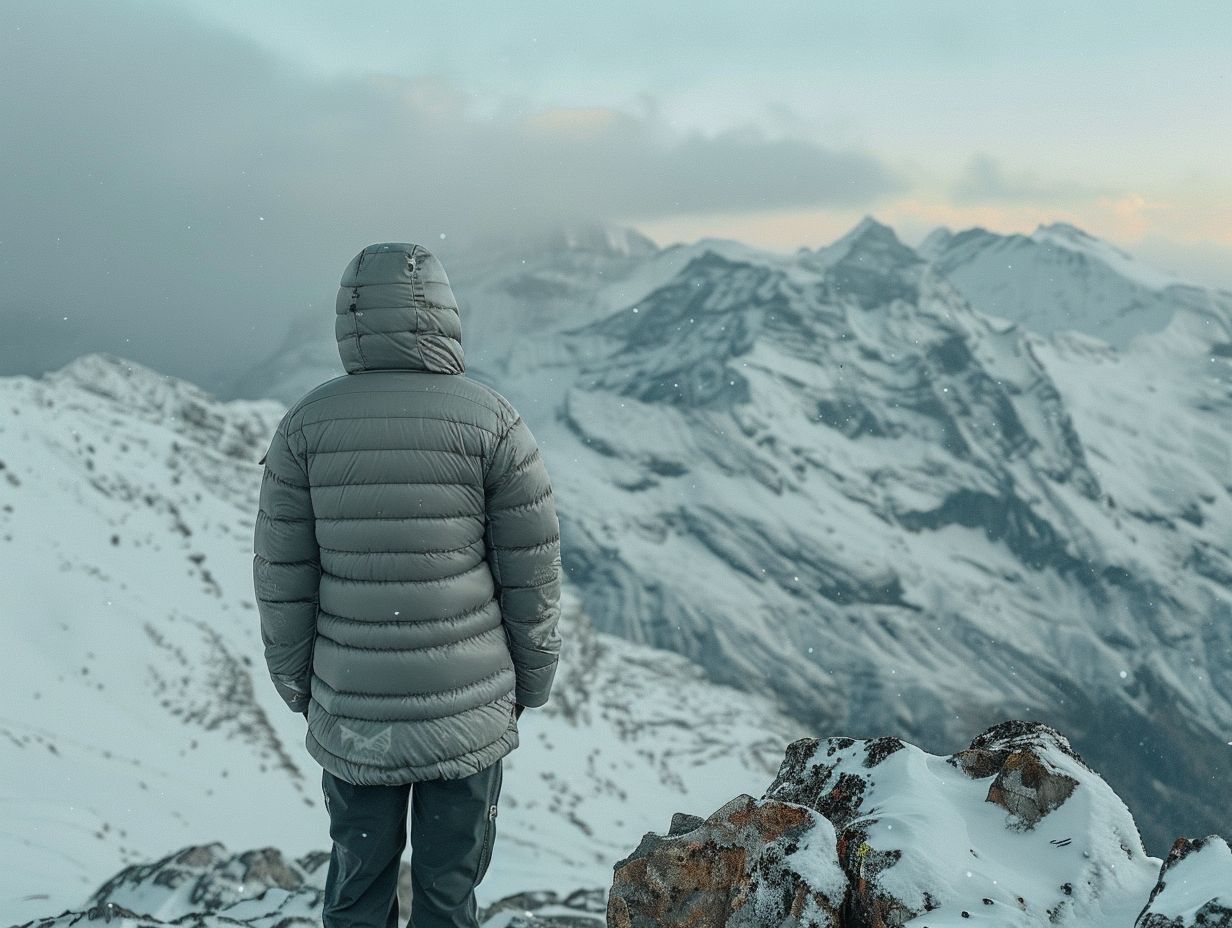
- A down jacket is a lightweight and packable option for staying warm on Kilimanjaro.
- When looking for a down jacket, consider factors like fill power, weight and warmth ratio, and design for the best fit and comfort.
- Proper care and repair can extend the lifespan of your down jacket. Alternatively, synthetic insulated jackets, fleece jackets, and layering are other options for staying warm on Kilimanjaro.
What Are the Benefits of Using a Down Jacket for Kilimanjaro?
Using a down jacket for Kilimanjaro offers essential benefits such as superior warmth, insulation, and protection against the cold and harsh weather conditions experienced while climbing the iconic mountain. When embarking on a challenging climb like Kilimanjaro, having reliable gear like a down jacket can make all the difference in ensuring a safe and enjoyable journey.
Brands like Outdoor Research and Patagonia are well-known for producing high-quality down jackets designed to withstand the rigors of mountain climbing. These jackets not only provide exceptional insulation but also offer breathability to prevent overheating during strenuous ascents.
1. Lightweight and Packable
One of the key features of down jackets like the Marmot Guides Down Hoody and Rab Neutrino Pro Down Jacket is their lightweight design, making them easy to carry and pack for Kilimanjaro expeditions.
Down jackets are known for their exceptional warmth-to-weight ratio, thanks to the high fill power of the down insulation.
The Marmot Guides Down Hoody, for instance, boasts a 700 fill power, ensuring superior insulation without adding bulk.
On the other hand, the Rab Neutrino Pro Down Jacket features 800 fill power, providing even greater warmth while remaining incredibly lightweight.
When gearing up for a challenging trek like climbing Kilimanjaro, these premium down jackets offer the perfect balance of warmth, packability, and comfort.
2. Insulation and Warmth
The insulation provided by high fill power goose down in jackets ensures exceptional warmth, crucial for maintaining body temperature in cold weather conditions on Kilimanjaro.
Fill power is a key factor in determining the quality of down insulation, indicating the loft and insulating ability of the material. Higher fill power ratings mean better insulation, trapping more warm air and creating a barrier against the cold.
This is particularly important when climbing in unpredictable weather conditions, where sudden drops in temperature can be challenging to handle.
Natural down also has the advantage of being lightweight and compressible, making it ideal for layering or packing in a backpack without adding extra bulk.
3. Water-Resistant
Water-resistant features like those found in the Marmot Alpine jacket with a hard shell enhance protection against rain and snow, making it suitable for Kilimanjaro where weather conditions can be unpredictable.
Along with its hard shell construction, the Marmot Alpine jacket utilizes advanced waterproofing technologies like Gore-Tex or eVent membranes, ensuring complete protection from the elements.
The water-resistant properties of down jackets like the Marmot Alpine also help maintain warmth in cold and wet conditions, crucial for mountain expeditions or outdoor activities in frosty weather.
The durable water repellent (DWR) coating on the outer fabric of the Marmot Alpine ensures that water beads off the surface, preventing saturation and maintaining the jacket’s insulating properties.
What Should You Look for in a Down Jacket for Kilimanjaro?
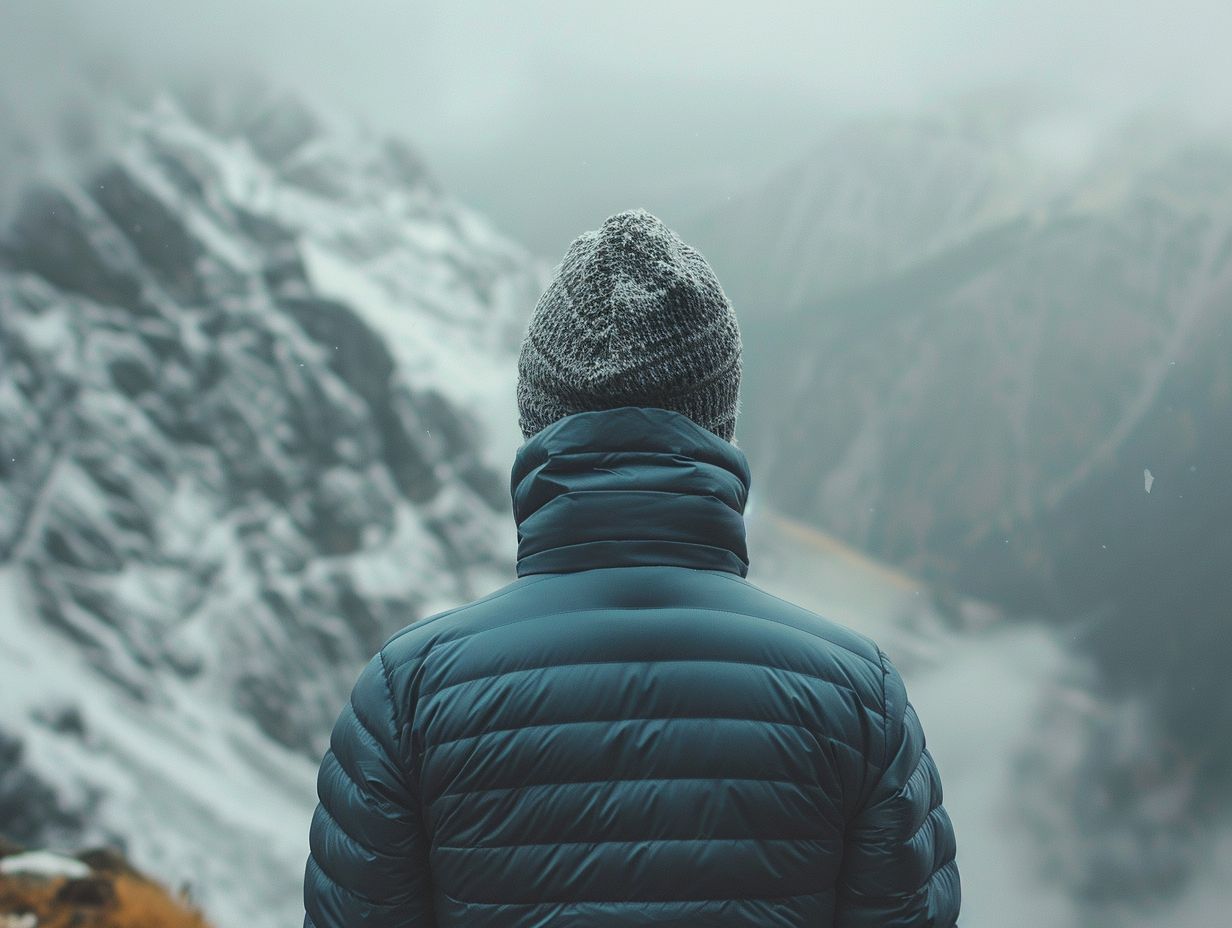
When selecting a down jacket for Kilimanjaro, it is essential to consider factors such as fill power, weight-to-warmth ratio, hood design, and proper fit to ensure comfort and protection during the climb.
Opting for a down jacket with a high fill power as well as lightweight materials in the construction of the jacket offer mobility and ease of movement during the ascent.
The hood plays a crucial role in shielding your head and neck from the harsh elements as well as a fitting jacket ensures an effective barrier against cold drafts and traps heat close to the body, enhancing overall thermal regulation.
1. Fill Power
Fill power is a crucial factor to consider when selecting a down jacket for Kilimanjaro, as it determines the quality of insulation provided and the jacket’s ability to retain warmth in varying temperatures.
Fill power, often represented as a number such as 550, 800, or even 900, indicates the loftiness and fluffiness of the down clusters within the jacket.
Higher fill power indicates larger and more resilient clusters, which create more air pockets for enhanced insulation.
These air pockets act as natural insulators, trapping body heat and forming a barrier against the external cold weather, making down jackets exceptionally effective in providing warmth without excessive weight or bulk.
2. Weight and Warmth Ratio
The weight-to-warmth ratio of a down jacket is pivotal for Kilimanjaro expeditions, as it ensures optimal insulation without adding unnecessary bulk or weight, crucial for tackling the cold conditions effectively.
Choosing a down jacket with the right balance of insulation and weight can significantly impact your overall comfort and mobility during the climb.
Lightweight designs offer excellent warmth without hindering your movements, allowing for more agility on rugged terrains.
The synthetic materials in modern jackets enhance their warmth while maintaining a lightweight feel, perfect for long treks in cold environments like Kilimanjaro.
Understanding this critical aspect helps adventurers make informed decisions for a successful and enjoyable expedition.
3. Hood and Collar Design
The hood and collar design of down jackets, such as the Patagonia Breithorn Hoodie, play a crucial role in protecting against wind and cold air, enhancing overall comfort and insulation during Kilimanjaro climbs.
When facing harsh weather conditions like those on Kilimanjaro, having a well-designed hood and collar can make a significant difference.
The hood provides additional protection for your head and neck, shielding you from icy gusts and maintaining warmth. A properly fitting collar helps seal in body heat, preventing it from escaping and ensuring you stay cozy on your ascent.
Models like the Patagonia Breithorn Hoodie are engineered specifically for climbers, with features that cater to the demands of high-altitude environments.
4. Fit and Comfort
Choosing a down jacket with the right fit and comfort, like a soft fleece-lined interior, is essential for ensuring ease of movement and maximum warmth during Kilimanjaro treks, offering both functionality and comfort.
When embarking on rugged outdoor adventures, having a down jacket that fits well is crucial for unrestricted mobility and insulation. The soft fleece lining not only provides added warmth but also ensures a cozy feel against the skin.
Layering properly can make all the difference in maintaining body temperature in challenging conditions. A well-designed down jacket offers a perfect balance between insulation and breathability, allowing you to regulate your comfort levels effectively.
Selecting the right size and cut prevents any restriction in movement, enabling you to navigate diverse terrain with ease and confidence.
How to Care for Your Down Jacket?
Proper care and maintenance of your down jacket, including washing, drying, and repairing when needed, are essential to preserve its insulation, longevity, and performance during Kilimanjaro expeditions.
Regarding washing your down jacket, always check the manufacturer’s guidelines as washing instructions may vary. Waterproofing along with drying as well as repairing appropriately are essential while caring for your jacket.
1. Washing and Drying
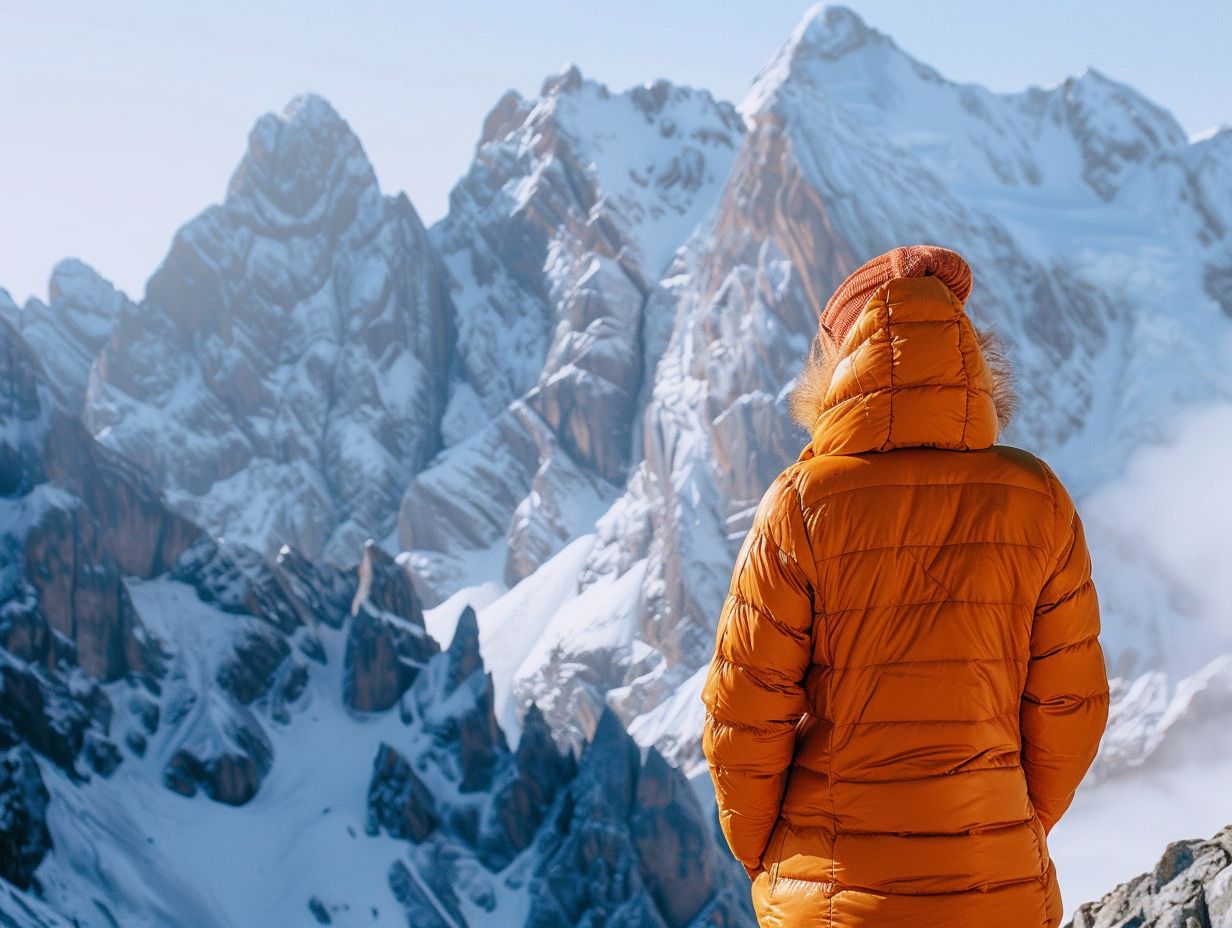
Proper washing and drying methods are crucial for maintaining the quality and insulation of your down jacket, ensuring it remains effective and durable throughout your Kilimanjaro journey.
Consider the following while washing:
- Use a front-loading washing machine on a gentle cycle with a mild detergent specifically designed for down items.
- Avoid using fabric softeners or harsh chemicals that can damage the insulation.
- Always rinse your jacket thoroughly to ensure no detergent residue is left behind.
- Use a mild detergent specifically designed for down garments to maintain its waterproof and insulating properties.
Drying is just as important as washing. This can be achieved by placing it in a dryer on low heat with a few clean tennis balls to help fluff up the insulation. Avoid air-drying as it can lead to clumping of the down material but it can also lead to clumping. Strike a perfect balance between the two to ensure proper drying.
2. Storing
Proper storage of your down jacket, especially before and after Kilimanjaro expeditions, is essential to maintain its insulation properties and ensure it stays in optimal condition for future outdoor adventures.
Regarding preserving the warmth and durability of your lightweight down jacket, there are a few key tips to keep in mind.
It is crucial to avoid compressing the jacket for extended periods, as this can damage the packable insulation.
Instead, consider hanging your jacket loosely in a clean, dry place or storing it in a breathable cloth bag. Regularly fluffing the jacket and shaking it out gently helps maintain its loft.
For those planning their Kilimanjaro climb, having a dedicated gear list is essential. Your down jacket should be neatly folded and positioned in a way that it isn’t squished by other items.
3. Repairing
Timely repairing of any damages or tears in your down jacket is crucial to extend its longevity and maintain its insulation properties, ensuring it continues to perform optimally on Kilimanjaro and other outdoor adventures.
One of the key steps in repairing a down jacket is to carefully assess the extent of the damage.
Start by identifying the location and size of the tear, examining the seams and stitching for any weaknesses that may need reinforcing.
Proper maintenance practices involve selecting the appropriate materials for the repair, such as strong nylon patches or specialized down-proof fabric tape to ensure the jacket retains its warmth and lightweight characteristics.
Remember to clean the area around the tear before applying any patches or glue, as dirt and oils can interfere with the adhesive bond.
What Are the Alternatives to a Down Jacket for Kilimanjaro?
While down jackets are popular for Kilimanjaro climbs, alternative options such as synthetic insulated and fleece jackets as well as layering with base and mid layers can also provide effective warmth and protection in cold weather conditions.
From synthetic to fleece layers and simply utilizing strategic base and mid layers can help manage moisture, regulate body temperature, and enhance breathability to ensure comfort during the varying temperatures encountered while climbing Kilimanjaro.
1. Synthetic Insulated Jackets
Synthetic insulated jackets offer a viable alternative to down jackets for Kilimanjaro treks, providing reliable warmth and breathability in diverse weather conditions, making them versatile choices for outdoor adventures.
One of the key advantages of synthetic insulated jackets is their ability to retain warmth even when wet, unlike traditional down jackets which lose their insulating properties when damp making them ideal for cold weather.
Synthetic insulation is often more affordable than down, making these jackets a cost-effective option for those looking to gear up for their Kilimanjaro expedition.
With advancements in technology, synthetic jackets now offer excellent compressibility and durability, adding to their appeal for outdoor enthusiasts.
2. Fleece Jackets
Fleece jackets serve as excellent mid-layers or standalone options for Kilimanjaro climbs, offering warmth and comfort while complementing the insulation provided by down jackets or other outer layers.
These soft jackets are specifically designed to trap body heat and maintain warmth in cold environments, making them ideal for high-altitude adventures like trekking up Mount Kilimanjaro.
The comfort of fleece jackets lies in their lightweight construction and breathability, allowing moisture to escape while keeping you snug.
This versatility in layering makes them a popular choice among outdoor enthusiasts looking for an extra layer of insulation that can easily be added or removed as temperatures fluctuate.
3. Layering with Base and Mid Layers
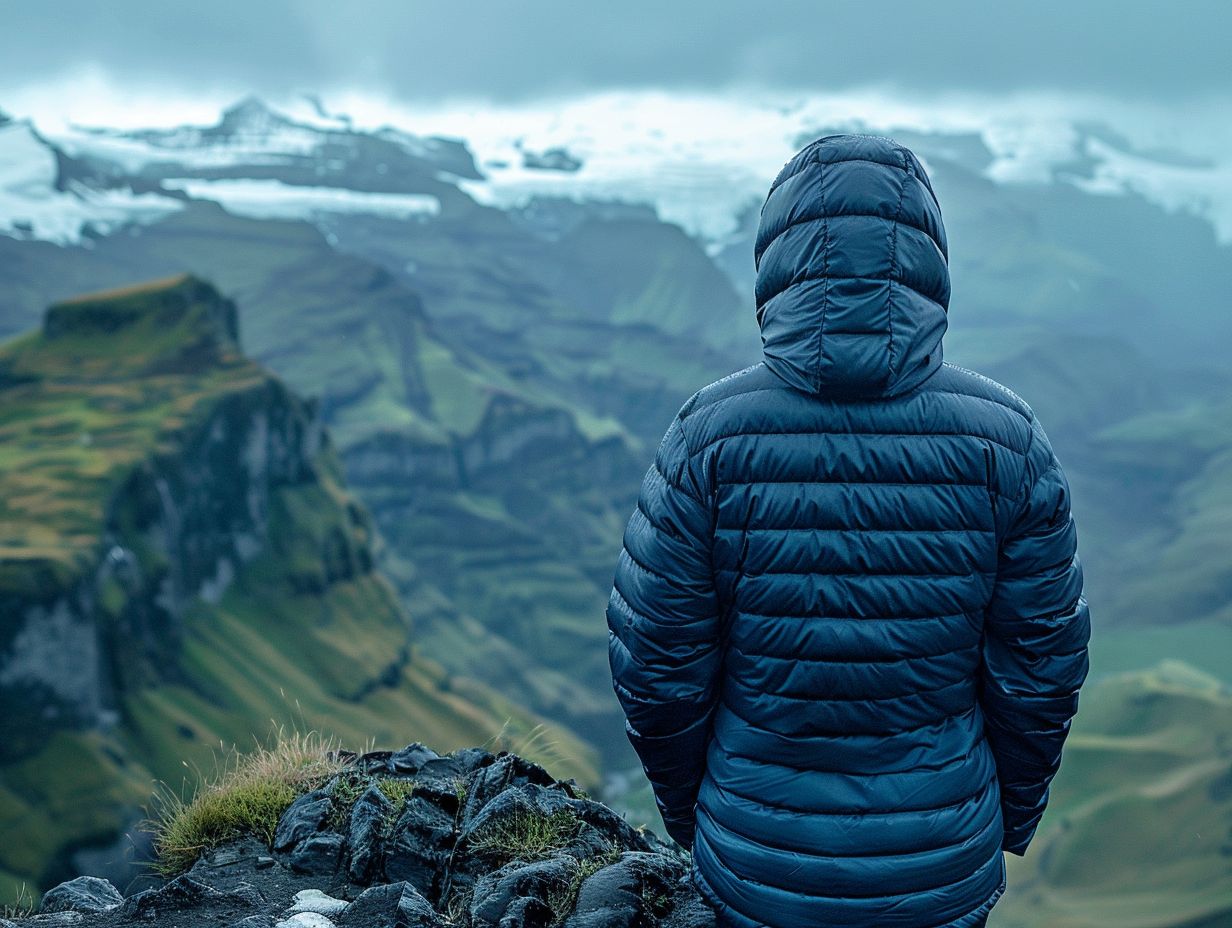
Layering with base and mid layers is a strategic approach for enhancing warmth and adapting to changing weather conditions during Kilimanjaro climbs, offering flexibility and insulation beyond a single jacket.
Base layers provide moisture-wicking properties, keeping the skin dry and comfortable, while mid layers trap heat to maintain optimal body temperature even in the cold mountain environment.
The combination of these layers ensures that the body can regulate temperature effectively, crucial for avoiding both overheating and hypothermia.
Base and mid layers are often designed to be lightweight and breathable, allowing for ease of movement and ventilation, essential during strenuous ascents.
With the proper layering system in place, climbers can easily adjust their clothing to match the changing conditions on Kilimanjaro, be it sudden rain or dropping temperatures.
Conclusion
Selecting the right down jacket for Kilimanjaro climbs is essential for ensuring optimal warmth, comfort, and protection against the mountain’s challenging weather conditions, making it a crucial gear choice for outdoor enthusiasts.
When considering down jackets for Kilimanjaro, factors like insulation type, weight, and durability play a significant role.
Options with PrimaLoft or Coreloft insulation are popular choices due to their lightweight yet efficient warmth retention properties.
Brands like Western Mountaineering are renowned for their high-quality down jackets known for their exceptional warmth-to-weight ratio, ensuring climbers stay cozy on their ascent.
These jackets are designed to provide exceptional warmth while remaining breathable to prevent overheating during strenuous hikes.
The right down jacket can truly be a climber’s best friend on the challenging terrains of Kilimanjaro.
Frequently Asked Questions
1. What makes a down jacket suitable for Kilimanjaro?
A: The most important factor in choosing a down jacket for Kilimanjaro is its warmth and insulation. Kilimanjaro’s summit can reach temperatures as low as -20 degrees Celsius, so you need a jacket that can keep you warm in these extreme conditions.
2. What is the fill power of a down jacket and does it matter for Kilimanjaro?
A: Fill power is the measure of how much loft or fluffiness a down jacket has. The higher the fill power, the better the insulation and warmth. For Kilimanjaro, it’s recommended to have a fill power of at least 600 to 800 for optimal warmth.
3. Should I choose a hooded or non-hooded down jacket for Kilimanjaro?
A: It is highly recommended to choose a hooded down jacket for Kilimanjaro. The hood provides additional warmth and protection for your head and neck, which are vulnerable to the extreme temperatures and wind on the mountain.
4. What is the ideal weight for a down jacket for Kilimanjaro?
A: The weight of your down jacket will depend on your personal preferences and the climate you are used to, but a good range for Kilimanjaro is between 500-800 grams. It should be lightweight enough to not hinder your movement, but heavy enough to provide adequate warmth.
5. Do I need to consider waterproofing for a down jacket on Kilimanjaro?
A: Waterproofing is not a crucial factor for a down jacket on Kilimanjaro, as the main purpose is to keep you warm. However, if you expect to encounter wet or snowy conditions, it’s recommended to choose a down jacket with a waterproof or water-resistant outer layer.
6. Can I rent a down jacket for Kilimanjaro?
A: Yes, some tour companies and gear rental shops offer down jackets for rent specifically for Kilimanjaro. However, it’s always best to bring your own down jacket that you are familiar with and fits you well, to ensure optimal comfort and warmth during your climb.